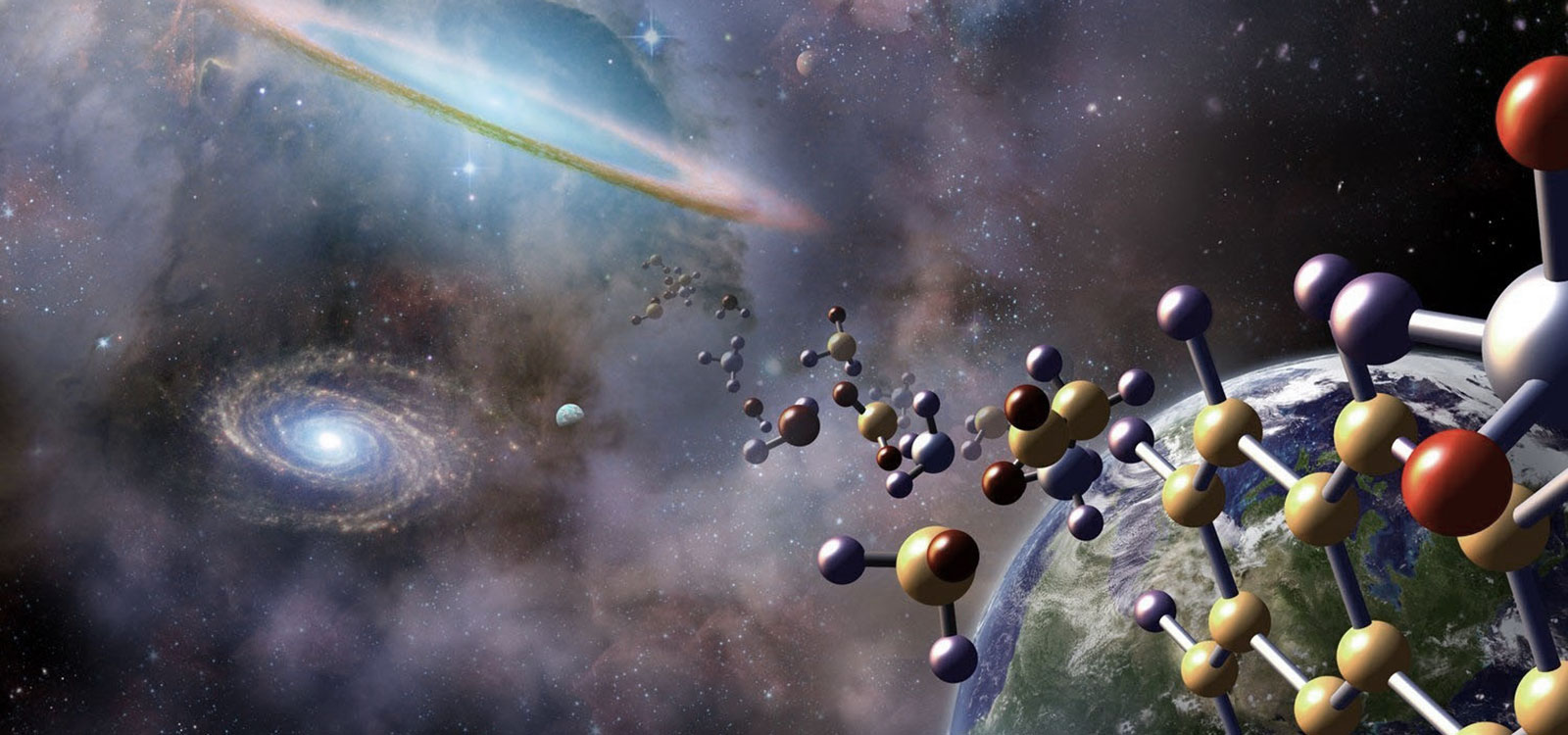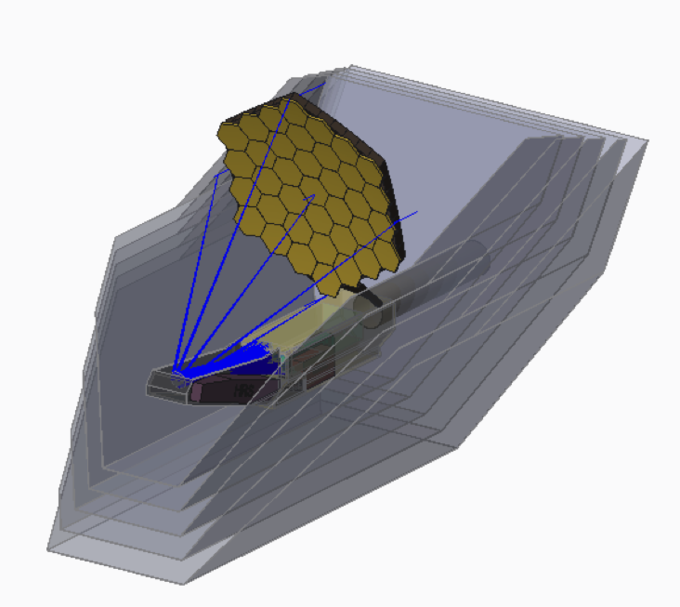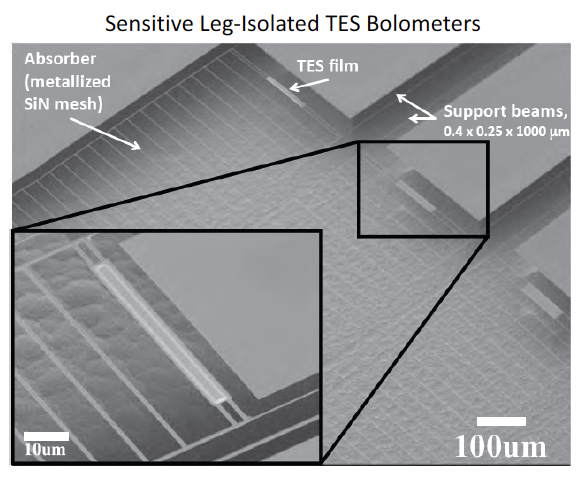Origins Concept-2 Baseline Design
The Origins concept-2 baseline design, consists of a 5.9m diameter (25 sq. meter collecting area), on-axis telescope with a primary composed of 18 lightweight pie-shaped segments arranged in two concentric rings. The telescope is diffraction-limited at 30 microns. All of the telescope optics are shielded and both radiatively and actively cooled to a temperature of ~4.5K. The telescope optical coatings allow for the operation of science instruments spanning the range from 5-600 microns.
OST Concept-2 baseline design has three science instruments including:
-
A mid-infrared transit spectrometer that operates from 5-30 microns, with resolving powers, R~100, 300 in three bands
-
A far-infrared, medium-spectral resolution, direct detection spectrometer, optimized for multi-object spectroscopy and large area mapping, spanning 30-600 microns, with R ~300 and an FTS selectable resolving power up to R~40000
-
A far-infrared broadband imager/polarimeter operating in two bands: 50, 250 microns
For additional information, including sensitivity plots, and more details about the instruments, the observatory, and the science, see our new Origins Brochure.
Origins Concept-1 Design
The first Origins design, consisted of a 9.1m diameter, off-axis telescope with a primary composed of 37 lightweight hexagonal segments. The primary mirror fed secondary and tertiary mirrors, plus a fine-field scanning mirror to improve the mapping efficiency for large-area observational programs. The telescope was diffraction-limited at 30 microns (with a goal of 20 microns), and deformable mirrors within some science instruments allowed for even finer spatial resolution. All of the telescope optics were shielded and both radiatively and actively cooled to temperatures of less than 6K. The telescope optical coatings allowed the operation of science instruments spanning the range from 5 to 600 microns.
OST Concept-1 had five science instruments including:
-
A mid-infrared imager/spectrograph/coronagraph instrument that could operate from 5 to 38 microns, with resolving powers, R~300, 1000-3000, and 20,000-30,000
-
A far-infrared, medium-spectral resolution, direct detection spectrometer, optimized for multi-object spectroscopy and large area mapping, spanning 30 to 600 microns, with R ~500 and 40000,
-
A far-infrared, high-spectral resolution, direct detection spectrometer, spanning 20 to 300 microns , with R~1E6,
-
A far-infrared imager/polarimeter operating from 35 to 500 microns,
-
A heterodyne spectrometer operating from 500 to 4,750 GHz with R < 1E7
Detectors for the Far-Infrared
Far-IR direct detectors for zodi-limited spectroscopy are unique – they are not developed by the same industrial teams that build near- and mid-IR devices. The sub-Kelvin bolometer arrays used by the microwave background groups, and in ground-based sub-millimeter instruments are the closest analogs, but OST detectors must be both lower noise (>100x) and scalable to larger formats (>50x yielding up to 500,000 pixels) than used thus far.
NASA and the US are world leaders in far-IR detector technology, with at least three approaches under development, all of which have produced compelling demonstrations through modest research grants:
- Superconducting transition-edge-sensed (TES) bolometers (below left) which build on the scientific heritage of the CMB and ground-based sub-millimeter instruments, but which are challenged in sensitivity and speed and require new readout system for the desired OST formats,
- Kinetic inductance detectors (KIDs - below middle) which demonstrated scalability to the OST format, but which require development to reach the required OST sensitivities,
- Quantum capacitance detectors (QCDs - below right), which have demonstrated excellent, zodi-limited low-background sensitivity, but require modifications to the readout to enable large formats.
Each approach has the potential to meet the needs of OST, but all require development to achieve the necessary combination of large format and sensitivity.





